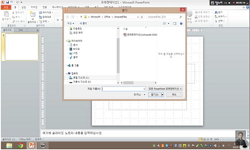Energy storage systems play a critical role in achieving carbon neutrality goals by enabling the integration of renewable energy sources and providing reliable and flexible electricity supply. By storing excess energy generated from renewable sources ...
http://chineseinput.net/에서 pinyin(병음)방식으로 중국어를 변환할 수 있습니다.
변환된 중국어를 복사하여 사용하시면 됩니다.
- 中文 을 입력하시려면 zhongwen을 입력하시고 space를누르시면됩니다.
- 北京 을 입력하시려면 beijing을 입력하시고 space를 누르시면 됩니다.
전원 유연성 확보를 위한 다종 에너지저장시스템에 대한 검토 = Reviews of Diverse Energy Storage Systems for Ensuring Power Flexibility
한글로보기https://www.riss.kr/link?id=T16836629
- 저자
-
발행사항
진주 : 경상국립대학교 융합과학기술대학원, 2023
-
학위논문사항
학위논문(석사) -- 경상국립대학교 융합과학기술대학원 , 신재생에너지융합학과(계약) 신재생에너지 , 2023. 8
-
발행연도
2023
-
작성언어
한국어
-
주제어
전원 ; 유연성 확보 ; 다종 에너지저장시스템
-
발행국(도시)
경상남도
-
형태사항
vi, 25 p. ; 26 cm
-
일반주기명
지도교수: 송철기
-
UCI식별코드
I804:48003-000000033500
- 소장기관
-
0
상세조회 -
0
다운로드
부가정보
다국어 초록 (Multilingual Abstract)
By applying various types of batteries including lithium-ion batteries to energy storage systems(ESS), the diversification of power-based ESS was achieved. After integrating them into the power grid, further research on performance analysis was conducted to reduce the investment cost and enhance the stability of ESS. By considering the performance and cost-effectiveness based on specific requirements for different applications and environmental conditions, including lithium-ion batteries, NaS batteries, rechargeable Redox flow batteries, and commercially available ESS, appropriate ESS systems can be established for various purposes in the power industry. This will contribute to the realization of carbon neutrality and the implementation of a combined ESS for power applications.
Energy storage systems play a critical role in achieving carbon neutrality goals by enabling the integration of renewable energy sources and providing reliable and flexible electricity supply. By storing excess energy generated from renewable sources during low demand periods, energy storage systems can ensure a stable supply of energy during peak demand periods. Additionally, they can reduce the need for conventional fossil fuel-based power plants, which can help to reduce greenhouse gas emissions. The development and deployment of cost-effective energy storage systems are crucial for the transition towards a sustainable, low-carbon energy system.
By applying various types of batteries including lithium-ion batteries to energy storage systems(ESS), the diversification of power-based ESS was achieved. After integrating them into the power grid, further research on performance analysis was conducted to reduce the investment cost and enhance the stability of ESS. By considering the performance and cost-effectiveness based on specific requirements for different applications and environmental conditions, including lithium-ion batteries, NaS batteries, rechargeable Redox flow batteries, and commercially available ESS, appropriate ESS systems can be established for various purposes in the power industry. This will contribute to the realization of carbon neutrality and the implementation of a combined ESS for power applications.
목차 (Table of Contents)
- Ⅰ. 서론 1
- Ⅱ. 에너지저장시스템 5
- 2.1 에너지저장시스템(ESS) 원리 5
- 2.1.1 리튬이온(Lithium-ion) 전지 5
- 2.1.2 NaS(Natrium-Sulfur) 전지 7
- Ⅰ. 서론 1
- Ⅱ. 에너지저장시스템 5
- 2.1 에너지저장시스템(ESS) 원리 5
- 2.1.1 리튬이온(Lithium-ion) 전지 5
- 2.1.2 NaS(Natrium-Sulfur) 전지 7
- 2.1.3 레독스 플로우(Rechargeable Redox Flow) 전지 8
- 2.2 전력 계통의 경직성 전원과 유연성 전원 9
- 2.2.1 경직성 전원(Rigid Power Supply) 10
- 2.2.2 유연성 전원(Flexible Power Supply) 10
- 2.2.3 에너지저장시스템의 전력 계통 유연성 11
- 2.3 에너지저장시스템(Energy Storage System, ESS)의 비교 12
- 2.3.1 리튬이온 배터리의 특징 12
- 2.3.2 NaS 배터리의 특징 13
- 2.3.3 Redox Flow Battery의 특징 14
- 2.4 에너지저장시스템별 안전성 15
- 2.4.1 리튬이온 배터리의 안전 특성 15
- 2.4.2 NaS 배터리의 안전 특징 16
- 2.4.3 Redox Flow Battery의 안전 특징 17
- 2.5 에너지저장시스템의 경제성 18
- 2.5.1 리튬이온 배터리, NaS 및 Redox Flow 배터리 최적 선정 18
- 2.6 기존 화력발전과의 에너지저장시스템 연계 방안 도출 20
- Ⅲ. 결론 22
- 참고 문헌 23
- 감사의 글 25











